Dealing With Heel Pain? What Causes Plantar Fasciitis and How to Treat It

What’s that pain in your heel? If you’re hobbling around like your grandfather in the morning because your feet hurt, you may have plantar fasciitis, a condition that plagues about one million people every year — especially runners.
What Is Plantar Fasciitis?
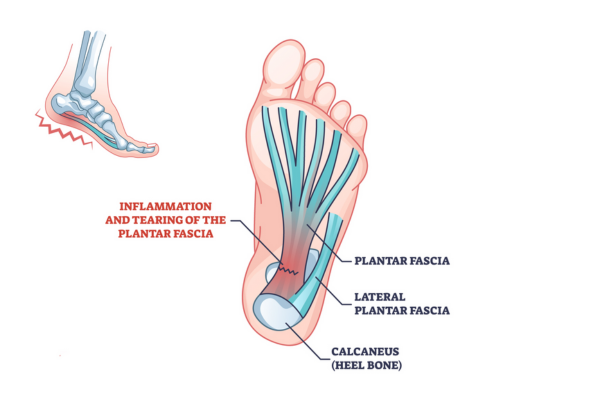
Plantar fasciitis is the inflammation and irritation — usually due to a tear — of the tough band of connective tissue that stretches along the bottom of your foot, also known as the plantar fascia.
Because the fascia inserts on the bottom of the heel, that’s where most people feel the pain — especially when they get out of bed in the morning. But some people may feel it closer to the ball of the foot.
Common symptoms of plantar fasciitis include the following:
- Sharp pain in or around your heel
- Pain in the arch of your foot
- Swelling near your heel
- Achilles tendon pain
What Causes Plantar Fasciitis?
The pain you experience from plantar fasciitis may feel abrupt and unexpected, but here are some factors that can contribute to it:
- Unsupported/flat feet. “Normally, because of the arch, the plantar tissue takes on kind of a ‘C’ shape,” says Nadya Swedan, M.D., a physiatrist in New York City. “But if your foot isn’t supported, it flattens out and that causes micro-tears. I see it frequently in women who wear flats or go barefoot, and in people who have gained weight or are on their feet for hours at a time.”
- Excessive foot pronation or supination. Overpronation (feet rolling inward too much with each step) and oversupination (feet rolling outward too much) contribute to the problem because your arch is essentially collapsing — stretching and tearing those fibers — with each step.
- Limited ankle dorsiflexion. Poor ankle dorsiflexion (the ability to draw your foot towards your shin), from tightness in the calves or Achilles tendon, is a risk factor for plantar fasciitis.
- Low activity levels. Studies show that people who are highly overweight and/or sedentary are at an increased risk of developing plantar fasciitis.
- Being on your feet for too long. According to a study of 50 participants with plantar fasciitis, those who spent a majority of their workday on their feet were more susceptible to pain.
How Can I Treat Plantar Fasciitis?
Rest is key. Cycling, swimming, deep-water running, and weight training are good stand-ins for running, but in the meantime, try these tips to treat the symptoms of plantar fasciitis.
1. Get assessed

Foot problems are often related to muscle imbalances in the hip.
After being diagnosed by a specialist, have a physical therapist or qualified trainer evaluate your gait, posture, and movement. This can help identify and correct imbalances and possibly even leg-length discrepancies that can be contributing to overpronation or oversupination.
2. Limber up
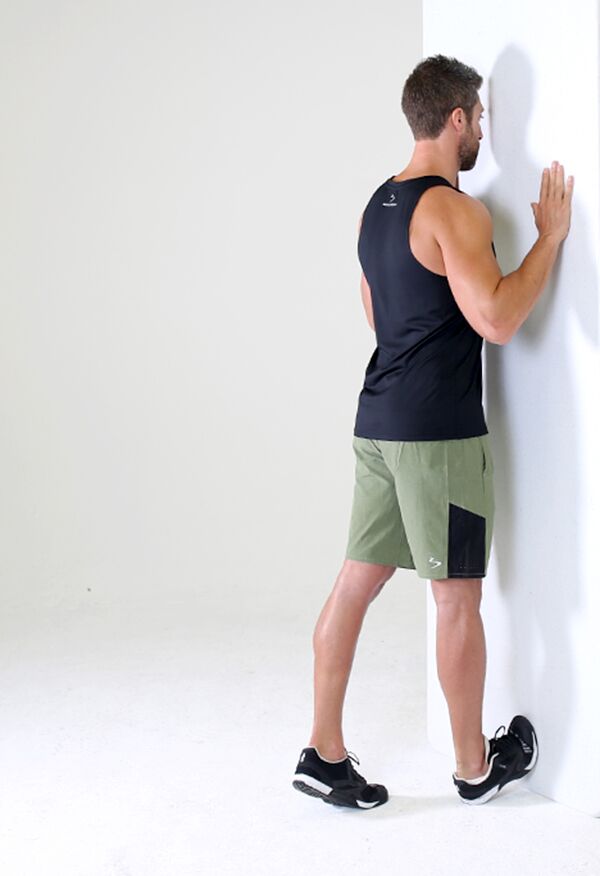
If your calf muscles are overly shortened and tight, your ankle will have less range of motion, which means there will be more pulling along the bottom of the foot.
The standing wall calf stretch can help loosen these muscles.
- Facing a wall, put one foot forward so your heel is on the ground and the ball of your foot is against the wall.
- Resting your hands on the wall, gently straighten your front leg and lean forward until you feel a deep stretch in your calf.
- Switch legs and repeat.
3. Get stronger
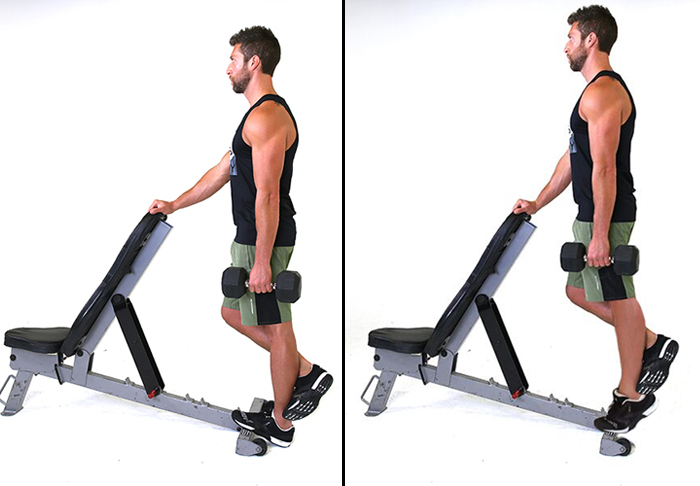
Strengthening the fascia will help it respond to the loads you want to put on it, which can be three to four times your bodyweight if you’re running.
A study in the Scandinavian Journal of Medicine & Science in Sports found that doing calf raises every other day initially improved the pain of plantar fasciitis more than stretching did (both groups ended up with similar results after a year and both wore heel lifts).
An effective exercise to help build strength is standing calf raises.
- Holding a dumbbell in your left hand, stand with the ball of your left foot on an elevated surface with your heel hanging off, and your right toes resting on your left ankle.
- Press the ball of your foot down to help keep your ankle aligned and avoid rolling.
- Keeping your core engaged, raise your left heel as high as possible.
- Slowly lower your heel down below the raised surface until you feel a stretch in your calf.
- Repeat and do equal reps on both legs.
4. Add cushioning
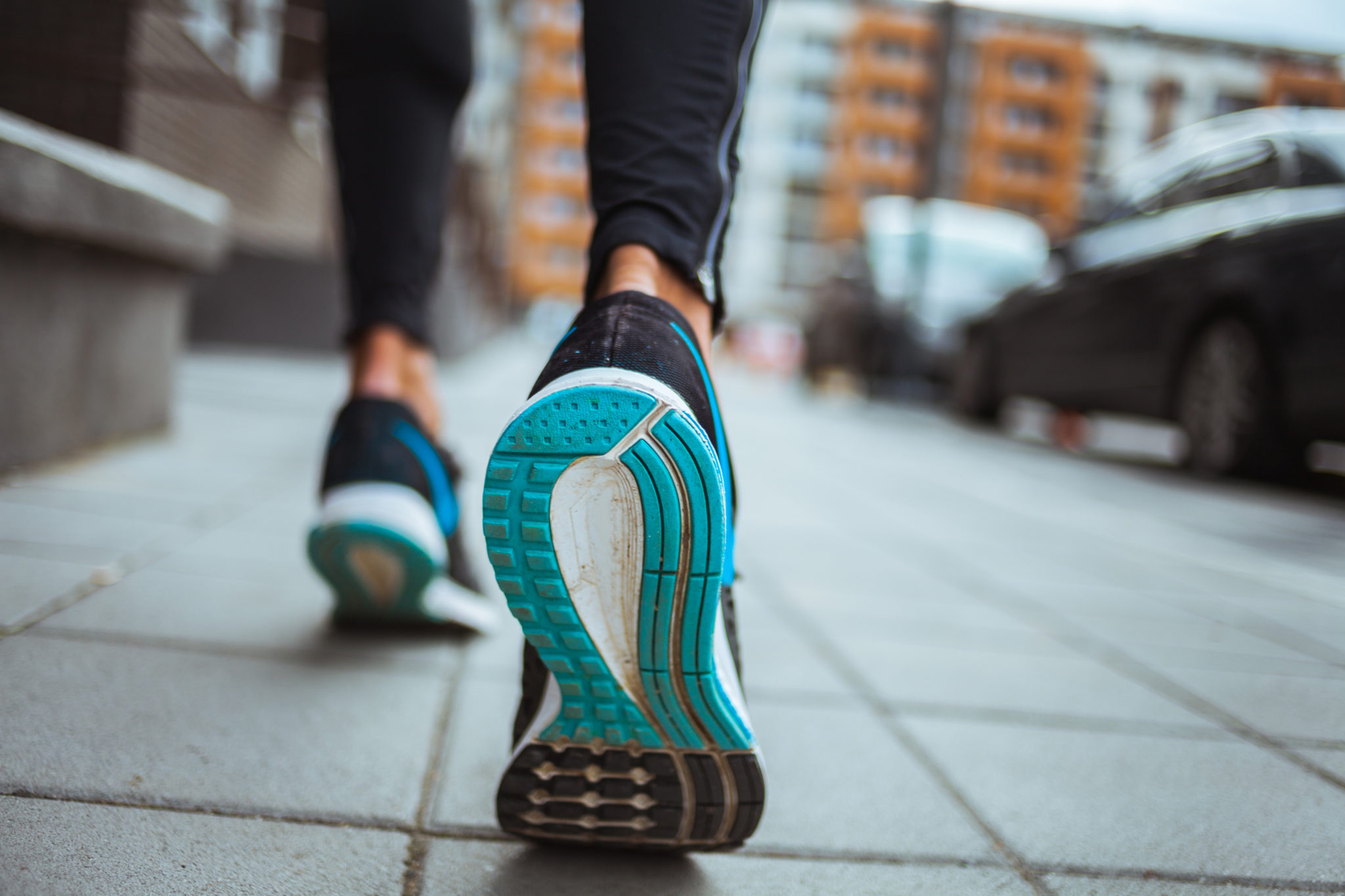
Increasing your heel height takes some of the strain off the fascia, reducing pain and trauma.
“Gel heel cushions, arch supports, and orthotics can all work,” says Swedan. “Check your local drugstore versions before you opt for pricier ones.”
Also, skip the flip-flops and ballet flats. Instead, favor shoes with more cushioning and a small heel.
5. Consider needles
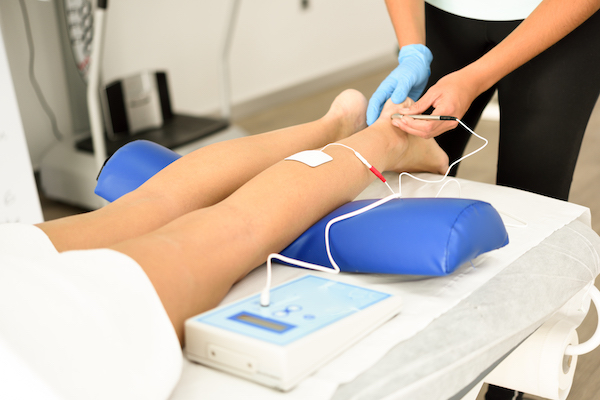
Studies are mixed on whether acupuncture can help, but some people swear by it and say you may see a reduction in pain after a single treatment.
Hydrocortisone injections can also offer temporary relief, but repeated shots can damage surrounding tissues.
